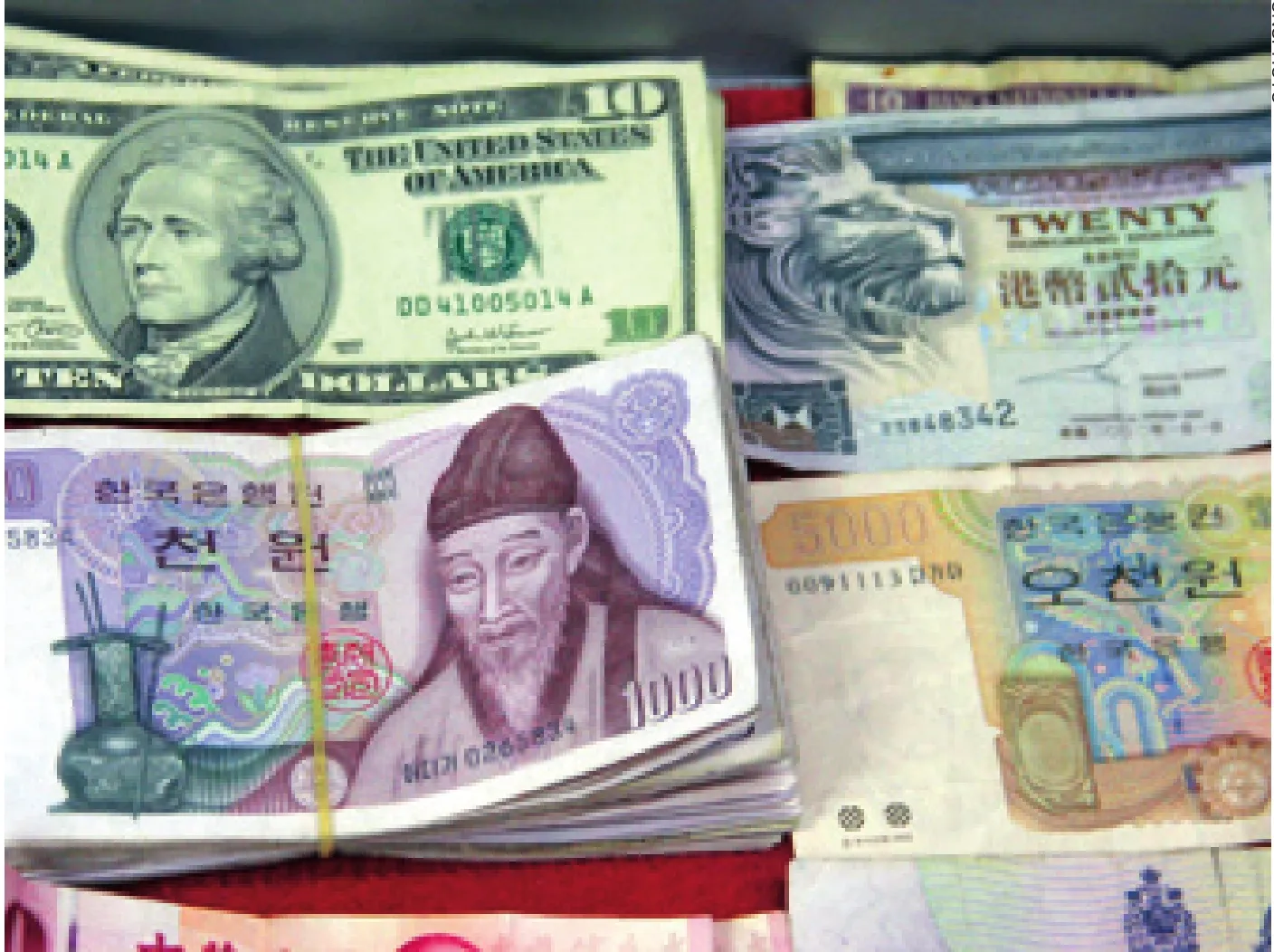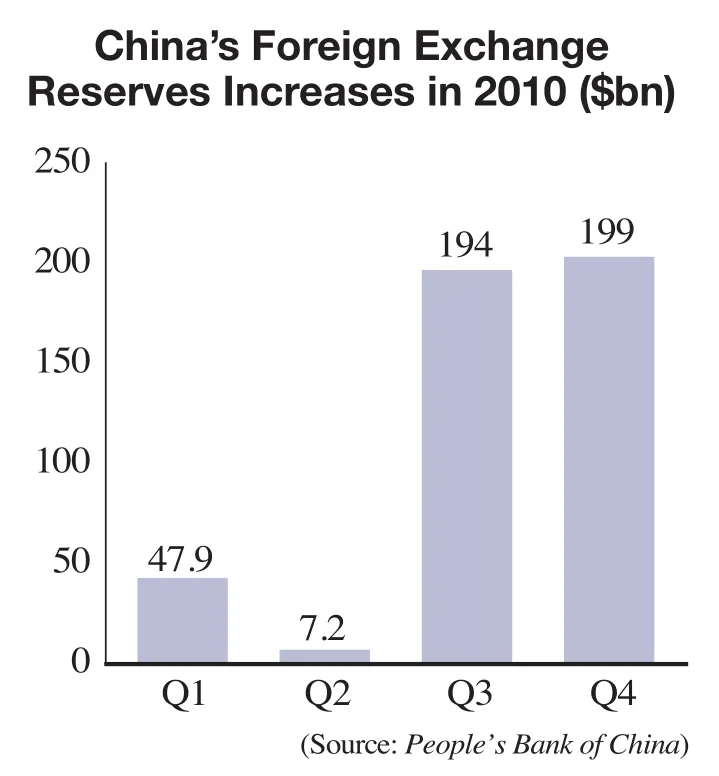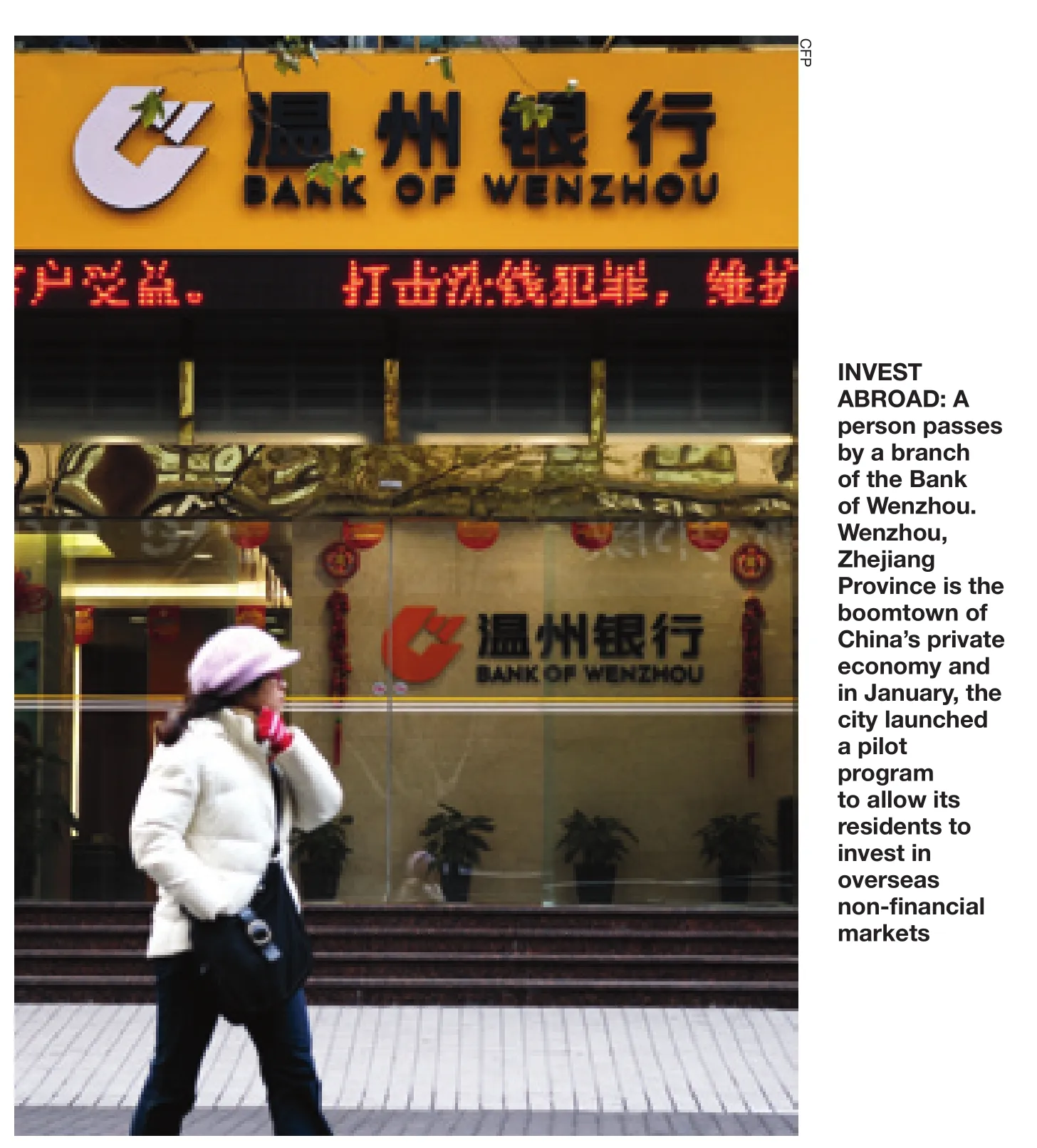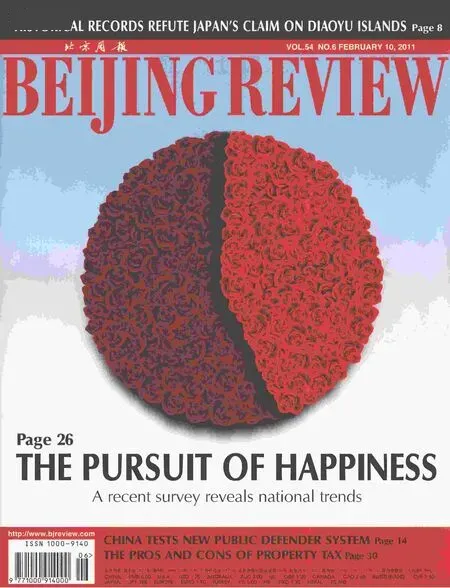A SAFE Choice
By LIU YUNYUN
A SAFE Choice
By LIU YUNYUN

MORE TARGETS: China is diversifying the investment channels for its huge foreign exchange reserves and the U.S. dollar is no longer the sole focus
The State Administration of Foreign Exchange is diversifying its huge money pool
China is overcoming its past addiction to U.S. Treasury bonds and is working on a more diversified portfolio, investing in bonds from other nations or in overseas properties.
The People’s Bank of China, the central bank, said in its 2010 financial data report, released on January 11 of this year, that by the end of 2010, the outstanding foreign exchange reserves had reached $2.8473 trillion, rising 18.7 percent year on year. A total of $448.1 billion was added to the reserve basket in 2010 alone.
Foreign currencies have been pouring into the country through trade surpluses and foreign investments. Since China started its foreign exchange management system reform in 1994, accumulating more U.S. dollars has been regarded as one of the major goals.
So far, nearly 70 percent of the foreign reserves are kept as dollar assets, and the slump in the value of the dollar, against the backdrop of the financial crisis, resulted in an enormous decrease in China’s foreign reserves. Therefore, whether the dollar assets are a blessing or a curse has been fiercely debated by Chinese economists.

Challenged by rising inflationary pressure, excess liquidity, the weakening U.S. dollar and the constantly appreciating yuan, China is rethinking its strategy and has abandoned the tried-and-true dollar-first policy.
Not in one basket
Data from the South Korean Financial Supervisory Service issued in January showed China’s net investment in South Korean bonds reached 4.697 trillion Korean won ($4.2 billion) in 2010. Each month in 2010, China’s investment in South Korean bonds was net investment.
Analysts noted the Korean economy is making headway, despite the financial crisis, and its currency is expected to rise in value. An index codified by HSBC Holdings showed the yield rate of South Korean government bonds in 2010 was 8.5 percent—with a positive yield in every month but October.
In addition to the Korean won, China has also been accumulating Japanese government bonds. According to figures of Japan’s Ministry of Finance, China accumulated the Japanese bonds for seven consecutive months staring January 2010, with the total value reaching 2.32 trillion Japanese yen ($28 billion). In August and September, China reduced its holdings of Japanese bonds by 2.79 trillion yen ($34 billion). But in October, China again increased the holding by 262.5 billion yen ($3.17 billion), most of which were shortterm bonds.
Before his January visit to Spain, Chinese Vice Premier Li Keqiang said in an article in a Spanish national newspaper,El Pais, “China is a responsible long-term investor, both in the European financial market and in the Spanish financial market. China has confidence in Spain’s financial market. It has purchased Spanish Treasury bonds and will buy still more.”
During Li’s visit to Spain, Yi Gang, Vice Governor of the People’s Bank of China, the central bank, said the euro and the European financial market have been and will continue to be some of the most important investment fields for China’s foreign reserves. Analysts said China’s commitment to supporting the bonds of European countries shows China’s strategic transference of its foreign reserves investment.
Chen Gong, Chairman of Anbound Group, a Beijing-based research-oriented company, toldInternational Herald Leaderthat China’s accumulation of euro assets is a win-win for the two sides. The debt-laden European countries need outside assistance, while China needs a new investment target for its huge foreign reserves. “This could help China to win more European countries to admit China’s full market economy status, reduce their protectionist measures against Chinese products and might help Chinese companies to invest in the European market,” Chen said.
Actually, the bond yield of some European countries hit by the debt crisis is rising significantly, and is far higher than that of the U.S. Treasury bonds.
Liu Yuhui, a researcher with the Institute of Finance and Banking at the Chinese Academy of Social Sciences, said China’s helping hand to the euro zone during its most difficult time is in effect bottom fishing for cheap euro assets, and buying euro assets will also lay a solid foundation for the future China-Europe economic and trade relations.
China’s foreign exchange reserves had reached $2.8473 trillion by the end of 2010. A total of $448.1 billion was added to the reserves in 2010 alone
CIC’s new target
In addition to SAFE’s $2.8 trillion in foreign reserves, a small portion of the foreign reserves is managed by China Investment Corp. (CIC), the country’s sovereign wealth fund. In 2007, CIC began operation with $200 billion in registered capital. CIC’s strategy is different from SAFE’s. It is inclined to invest in projects and assets with high risks and high yields.
At present, CIC manages $300 billion. Its 17-percent stake purchase in Canadian energy company Teck Cominco Ltd. in 2009 has brought $2.5 billion in yield for CIC, Donald R. Lindsay, President of Teck Cominco toldChina Business News. Last November, CIC bought a 7.6-percent stake in General Growth Properties Inc., the second largest shopping mall operator in the United States. Early this year, CIC joined forces with New York’s AREA Real Estate Finance Corp. to buy a preferred equity stake in 650 Madison Avenue, the 27-story building that houses the headquarters of Polo Ralph Lauren Corp., said Bradford Wildauer, AREA’s President. The U.S. property market has dropped a lot from its 2006 peak and analysts believe it may be a good time for CIC to invest there.
Private investment
The latest change in the Chinese foreign reserves policy was a move to allow residents to invest directly in overseas markets announced by the government of Wenzhou, Zhejiang Province, which is home to the most robust private economy in China.
At the beginning of this year, Wenzhou Foreign Trade and Economic Cooperation Bureau announced the pilot program of allowing its residents to apply for investment in overseas non-financial markets, including the Hong Kong Special Administrative Region, with single investments capped at $3 million and annual investments capped at $200 billion per person. All investments need to be approved by the bureau.
“I believe most of the individuals applying for overseas investment are operating small local enterprises. With $200 billion, you can buy factories, open restaurants and shoe plants in any foreign countries,” Ling Lanfang, Chairman of Silk Road Holding Group Co. Ltd. based in Zhejiang, toldEconomic Information Daily.
It’s estimated that private capital amassed by Wenzhou residents has exceeded 600 billion yuan ($90 billion).
Ling said the government intends to encourage private foreign capital to adventure in the international market, to reduce the yuan counterparts of the foreign currencies and alleviate the pressure on money supply.
By allowing this pilot program, the decision makers are also sending signals of gradually opening up the capital account under the balance of international payments, he said.
In addition, after the international financial crisis hit in 2008, many large state-owned enterprises (SOEs) responded to the Central Government’s “going out”strategy by taking on international mergers and acquisitions. But small enterprises lag behind large SOEs in overseas investment.
Ling said the program will, to some extent, encourage more Wenzhou enterprises to invest in overseas markets.


